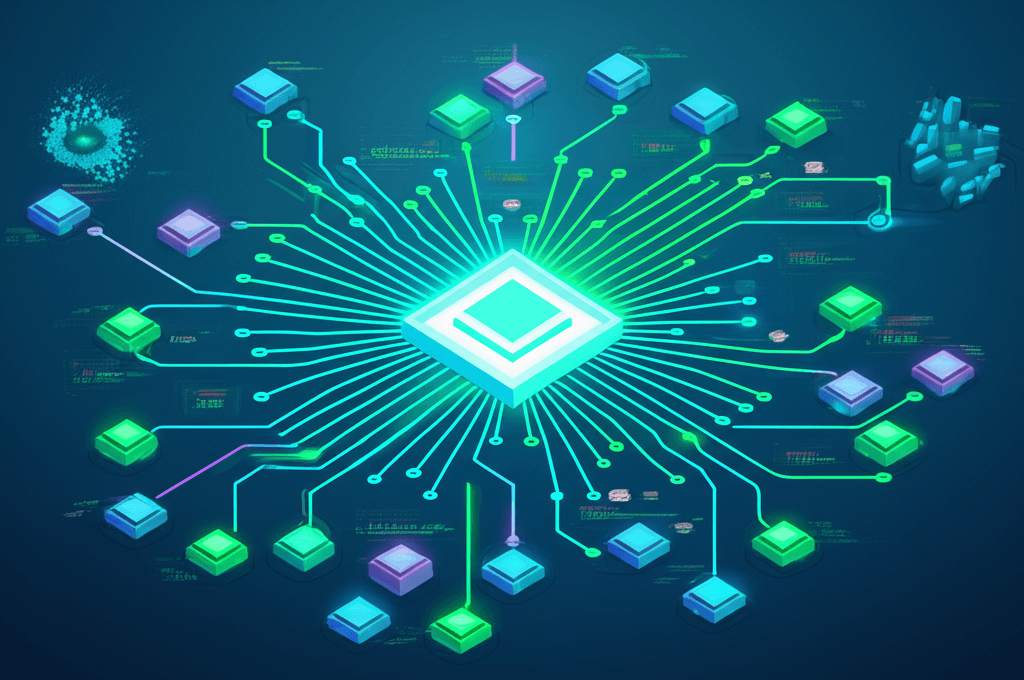Google Establishes Universal Language for AI Agents via Linux Foundation
Google open-sources Agent2Agent, creating a universal language for AI to break silos and foster seamless collaboration.
June 24, 2025

In a significant move for the artificial intelligence industry, Google has transferred its Agent2Agent (A2A) protocol to the Linux Foundation, placing a key piece of AI infrastructure under neutral, open-source governance.[1][2] This decision, announced at the Open Source Summit North America, aims to foster a vendor-agnostic ecosystem where AI agents, regardless of their creator or underlying framework, can seamlessly communicate and collaborate.[1][3] The protocol, initially revealed by Google in April, is designed to break down the silos that currently isolate AI systems, potentially unlocking new levels of automation and productivity.[4][5] By handing over A2A, along with its software development kits (SDKs) and other tools, Google is seeding a new collaborative project that has already attracted support from over 100 technology companies, including major players like AWS, Cisco, Microsoft, Salesforce, and SAP.[1][6][4]
The core purpose of the Agent2Agent protocol is to solve the growing challenge of interoperability in an increasingly fragmented AI landscape.[7] As enterprises deploy more autonomous agents to handle tasks ranging from customer service to complex supply chain planning, the inability of these agents to talk to each other has become a significant barrier.[8][9][5] A2A provides a standardized communication layer, a universal language for AI, that allows disparate agents to discover each other's capabilities, delegate tasks, and securely share information.[8][7][3] This is achieved through established web technologies like JSON-RPC over HTTP(S), ensuring it can be integrated into existing systems with relative ease.[10][11] The protocol allows for various interaction styles, including simple request-response actions, long-running asynchronous tasks, and real-time data streaming, making it versatile for a wide range of applications.[10][11][12]
A crucial aspect of the A2A protocol is its technical design, which emphasizes security and opacity.[8][12] Agents can collaborate without exposing their internal logic, memory, or proprietary tools, a feature critical for enterprise adoption where data privacy and intellectual property are paramount.[11][7] Communication is facilitated through "Agent Cards," which are standardized JSON files that act as a digital business card, detailing an agent's skills and how to connect with it.[7][11][13] This discovery mechanism enables a dynamic environment where an AI system can find and enlist other agents to perform complex workflows.[8][3] For instance, a hiring workflow could involve one agent sourcing candidates, another conducting initial screenings, and a third performing background checks, all communicating and coordinating through A2A.[14] Furthermore, the protocol supports multimodal content, allowing agents to exchange not just text but also images, audio, and video within a single workflow.[10][7]
The move to the Linux Foundation is a strategic one, intended to assure the industry of the protocol's neutrality and long-term stability.[1][2] By placing A2A under an open-governance model, the project aims to prevent vendor lock-in, a common concern in the tech industry where reliance on a single company's ecosystem can stifle innovation and increase costs.[3][15][16] The Linux Foundation has a long history of successfully stewarding critical open-source projects like Linux and Kubernetes, providing a trusted framework for collaboration and ensuring that development is community-driven.[1][17] This collaborative approach is expected to accelerate the adoption and refinement of A2A, establishing it as a foundational standard for the next wave of AI.[3][4] The project will not only manage the protocol's specification but also the development of supporting SDKs and tools to make it accessible to developers.[1]
The implications of a widely adopted A2A standard are profound, promising to create a more dynamic and competitive AI ecosystem.[18][4] It complements other existing protocols, such as Anthropic's Model Context Protocol (MCP), which focuses on connecting agents to tools and data sources, whereas A2A is specifically for agent-to-agent interaction.[1][6][7] Industry response has been overwhelmingly positive, with partners highlighting the critical need to break down AI silos to unlock the technology's full potential.[18][9] For businesses, this means the ability to build sophisticated, multi-agent systems by combining the best-of-breed agents from various providers, rather than being confined to a single vendor's offerings.[6][19] This fosters flexibility and allows companies to create more powerful and innovative AI applications, ultimately driving greater efficiency and creating new possibilities for enterprise automation.[3][9] As the project evolves under the Linux Foundation's guidance, the vision of a truly interconnected web of intelligent agents working in concert appears closer than ever.
Sources
[6]
[8]
[10]
[11]
[12]
[13]
[16]
[17]
[18]
[19]